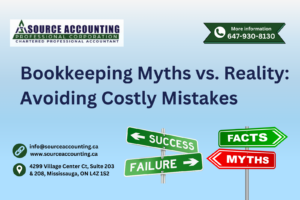What is income splitting?
Income splitting is a tax strategy to redistribute income among family members to reduce the overall tax burden. This can be done by transferring income-producing assets or business ownership to a lower-income spouse or family member, or by paying salary or dividends to a family member who is in a lower tax bracket. Idea is to take advantage of the progressive nature of the tax system, where those in higher tax brackets pay a higher percentage of their income in taxes than those in lower tax brackets.
Income splitting for family-owned businesses
As small and medium-sized businesses (self-employment), your income is subject to personal tax rates, which reaches as high as 53.3% in Ontario. Therefore, most business owners decide to incorporate (a federal corporation or Ontario corporation). The incorporation allows various benefits including lower corporate tax rates/tax deferral, an option to choose between salary and dividend, and income splitting opportunities including hiring family members as an employee, etc.
There are some more income splitting and tax planning opportunities that can be employed equally, whether you are incorporated or not.
Spousal Registered Retirement Savings Plan (RRSP)
A spousal registered retirement savings plan (RRSP) is a great tax planning tool. If one spouse is expected to earn a substantially higher retirement income than the other, the higher-income spouse can contribute to the RRSP account of the spouse. Later, when the lower-income spouse withdraws the income, it will be considered the income of the spouse who holds the accounts, not the person who contributed the fund. Since the lower-income partner will be in a lower tax bracket, it will be subject to a lower tax rate.
Tax-Free Savings Accounts (TFSA)
Tax-Free Savings Accounts are yet another important tax planning tool and an easy way to split income. If the higher-income spouse has used the TFSA contribution room and the lower-income spouse has a contribution room, the higher-income spouse can give the funds to the other partner. The funds inside TFSA grow tax-free and are not subject to tax on the withdrawal.
Attribution Rules
The good news is that attribution rules also do not apply to TFSA. Attribution rules result in the income generated being attributed back and taxed in the hand of the person who provided the fund rather than the entity (or person) who owns the investment.
For RRSP, there is a 3-year attribution rule, which means contributions to a spousal RRSP can’t be taken out for at least three years after the date they were put in. If the funds are taken out within 3 years, the money becomes taxable income for the contributing spouse.
Spousal Loan
In this strategy, a higher-income spouse gives a loan to lower income spouse and charges interest at the CRA’s prescribed rate. There needs to be a formal agreement/documentation for this arrangement. The lower-income partner then can invest these funds and generate income (of course income must be more than the CRA’s prescribed rate) which will be taxed at a lower rate. Plus, interest payment made by the lower-income spouse to the lending spouse is tax deductible.
Use of a Family Trust
A family trust, a separate legal entity, can also be set up that you control for the benefit of your family members. Investment income earned by the trust can be distributed to family members with lower incomes. To set up the trust you (a business corporation) lend the money to the family trust. The trust pays interest to you the (lender) at the CRA’s prescribed rate to avoid attribution rules. Interest paid by the trust will be tax deductible by the trust. This way business owners can transfer some of their future income into the hand of their family members and lower their tax burden.
There are specific tax rules to consider when assessing if a family trust will fit with your financial plan.
The above is certainly not an exhaustive list of tax planning tools, and a plan needs to be devised for the specific needs of each entity or person.
If you need assistance with tax planning, incorporation, and bookkeeping, the Source Accounting Team will be happy to help. Please get in touch with us at info@sourceaccounting.ca or call 647-930-8130 for further details.
Source Accounting Professional Corporation (CPA) is a full-service accounting firm in Mississauga, dedicated to individuals, small and medium-sized businesses, providing tax preparation, corporate tax filing, accounting, bookkeeping services, payroll solutions, etc. If you are looking for an accountant Mississauga (Brampton, Toronto, GTA) or an accountancy firm Brampton, you are in the right place.
Disclaimer: The above contents are provided for general guidance only, based on information believed to be accurate and complete, but we cannot guarantee its accuracy or completeness. It does not provide legal advice, nor can it or should it be relied upon. Please contact/consult a qualified tax professional specific to your case.
![Heaader1SourceAccount[3148]](https://sourceaccounting.ca/wp-content/uploads/2021/11/Heaader1SourceAccount3148-2048x289.png)




